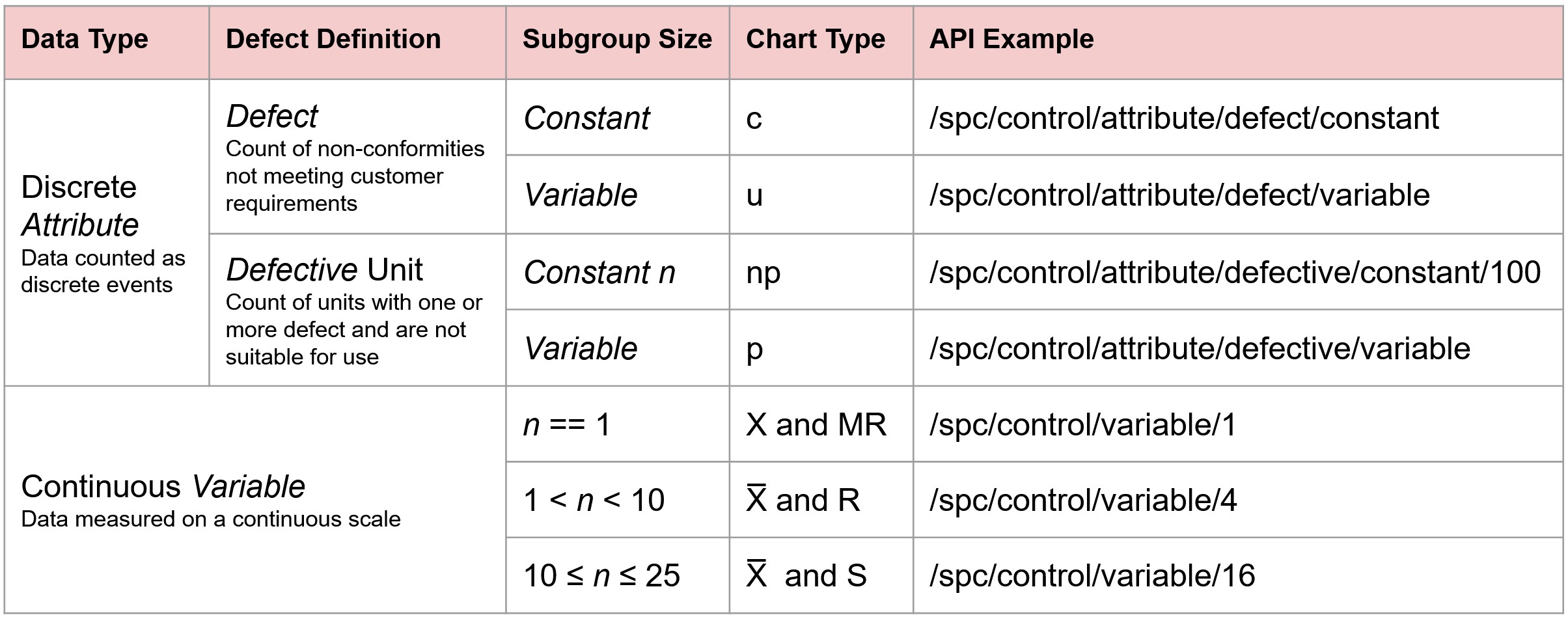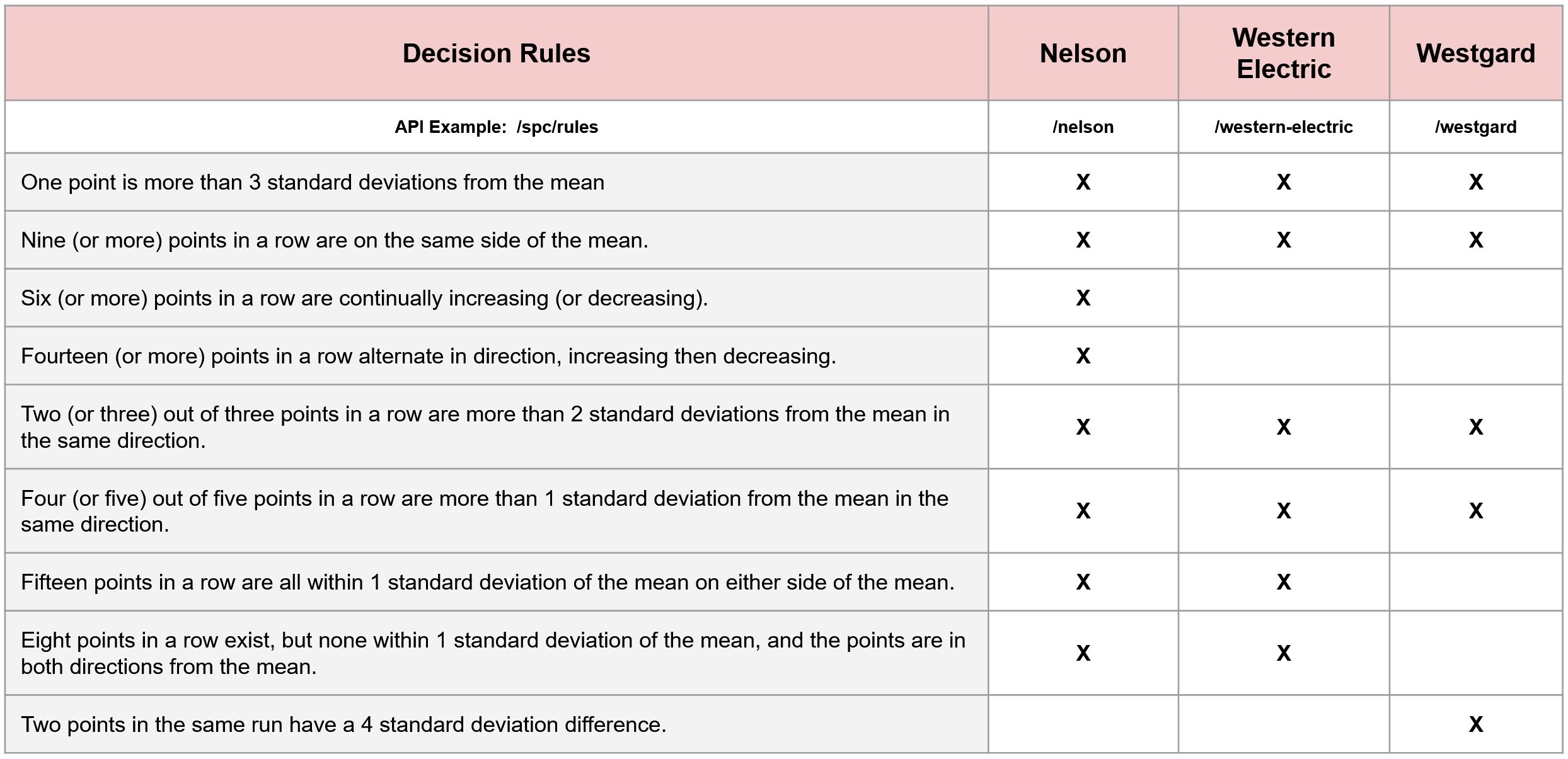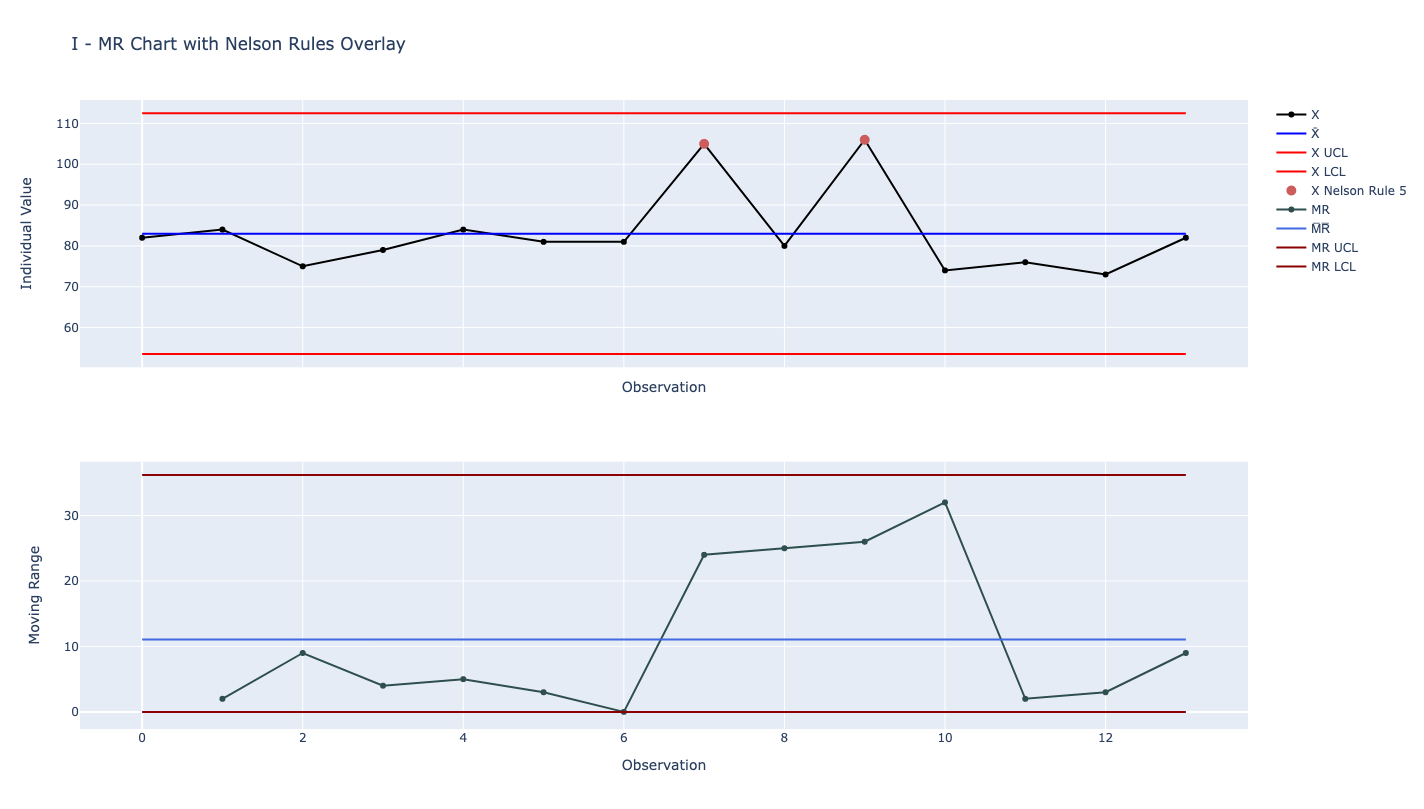Manufacturing Serverless APIs - Statistical Process Control
Over a year ago I advocated for a robust library of third-party APIs in “Where Are the Industry 4.0 Third-Party APIs?” Today, the first third-party API by Exponential Industry is live on RapidAPI Hub! This API is able to perform all the calculations needed for statistical process control control charts and apply decision rules to identify non-random conditions occurring in a process. The APIs are optimized for performance and simplicity. They have extremely low latency (<100ms) for use in near-real time applications while making it simple to parallelize requests and scale to thousands of processes and data streams.
Control Chart APIs
The control chart APIs make it straightforward to map your data stream into the correct control chart based on data type, defect definition, and subgroup size.

Decision Rule APIs
Once the control chart is created, decision rules can be applied with only one additional request! Nelson, Western Electric, and Westgard rules are all supported.

Tutorial - Interactive SPC Chart in 50 Lines Of Code
Get started today with this quick tutorial to create an interactive control chart in plotly on your computer or serve in a web app.
Output
{‘kind’: ‘I - MR’, ‘k’: 14, ‘x_bar’: 83, ‘x_ucl’: 112.46461538461539, ‘x_lcl’: 53.535384615384615, ‘mr’: [None, 2, 9, 4, 5, 3, 0, 24, 25, 26, 32, 2, 3, 9], ‘mr_bar’: 11.076923076923077, ‘mr_ucl’: 0, ‘mr_lcl’: 36.18830769230769}
{‘failed_rules’: [False, False, False, False, True, False, False, False], ‘failed_indices’: [[], [], [], [], [7, 9], [], [], []]}

Analytics in Motion
Confluent released its annual “State of Data in Motion Report 2022” which outlines a number of key findings. According to the report, “more than 8 in 10 leaders say real-time data streams are critical to responsive business processes for employees.” In manufacturing, real time analytics such as statistical process control are critical to maintaining efficient operations and high yields. Exponential Industry will continue to develop performant third-party APIs that make ‘analytics in motion’ accessible to all businesses, big and small.
Assembly Line
Nokia creates the perfect pint with 5G technology
Nokia and the University of Technology Sydney (UTS) have announced the successful operation of the world’s first private wireless and 5G connected digital microbrewery. The state-of-the-art facility forms part of UTS’s Industry 4.0 research site and enables thirsty researchers to perfect the art of brewing in the twenty-first century using digital automation.
Utilizing a cloud-based digital twin of an actual brewery to optimize the brewing process, UTS’s Industry 4.0 Nano-Brewery, is part of its new Advanced Manufacturing and Industrial Data Science testbed developed at the UTS Tech Lab. The Nano-Brewery forms part of an international production network, with an identical physical twin set up at TU Dortmund University in Germany. The 5G connected brewery captures and monitors production data at every step of the brewing process and uses this data, together with data from the physical twin in Dortmund and a digital twin in the cloud, to optimize the process.
Simple, Cheap, and Portable: A Filter-Free Desalination System for a Thirsty World
A group of scientists from MIT has developed just such a portable desalination unit; it’s the size of a medium suitcase and weighs less than 10 kilograms. The unit’s one-button operation requires no technical knowledge. What’s more, it has a completely filter-free design. Unlike existing portable desalination systems based on reverse osmosis, the MIT team’s prototype does not need any high-pressure pumping or maintenance by technicians.
GE Healthcare Achieves Lean Efficiency With Autonomous Mobile Robots
Germain likes the OTTOs because they get material where it needs to be, when it needs to be there. This is essential, as the AMRs must deliver parts for more than 2,000 equipment repairs per week. Material flow efficiency is improved, notes Germait, because the robots enable pull-type supply chain management, where material movement is based on actual demand. However, material handling is not standardized because the facility receives different-size parts every day, and the parts often need to be delivered to different repair cells.
Hundreds of technicians work in the West Milwaukee facility, in repair cells that are 40 percent smaller since implementing AMRs. Downsizing the cells has also enabled GEH to increase its productive floor space by 66 percent and greatly improve throughput per square foot.
Robot welding: Load programs and swap between parts in just 15 mins 🦾 pic.twitter.com/v5hESJ2ATf
— Universal Robots (@Universal_Robot) May 19, 2022
New Industrial Robot at Cornell can 3D Print Large-Scale Structures for the Construction Industry
A new 6,000-pound industrial robot at Cornell University can 3D print the kind of large-scale structures that could transform the construction industry, making it more efficient and sustainable by eliminating the waste of traditional material manufacturing.
Surge Demand
Automotive chip production is wise to onshore according to Infineon, while Amkor drives to zero defects in its auto semis. Semiconductors remain political as President Biden tours a Samsung chip plant while in South Korea and Japan seeks to scale up production of chips of their own. Manufacturers will begin to see novel legal issues due to robots.
